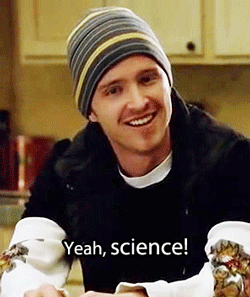So………………..what is a bone marrow transplant? If you are like
me then you are lucky enough to have gone 30 years of your life without ever
having known someone who had a bone marrow transplant (mostly likely I knew
someone but was too young or too self-involved to really empathize and
understand their situation) and thus I really didn’t understand what a BMT entailed.
Let me tell you, while a medical marvel, it sounds terrifyingly
painful and painfully terrifying.
What is bone marrow? This I already kind of knew due to my living in Italy and eating Osso Bucco (I am mortified that FOOD is my reference point for this procedure but I’m not going to lie to you people and pretend I know anything about medicine beyond Dr. House and ER, which basically means I am well-schooled in witty repartee and torrid work-place affairs). Bone Marrow is the spongy part of the interior of a bone. It is the fatty tissue, comprised mostly of stem cells which give rise to all of your blood cells. So, the marrow is incredibly important and nutrient dense.

Let’s break it down. There are three types of BMTs: Autologous where you cultivate and extract your own bone marrow to save for later use after chemotherapy and radiation treatment; Allogenic where you extract the bone marrow of a donor; and Umbilical where you extract stem cells from an infant’s umbilical cord after birth and store said cells for later use.
Baby Luke is getting the Allogenic which means he had a
donor donate her cells for his use.
To continue the fun, there are two kinds of BMT extraction
for donation: a Bone marrow harvest (the least fun of all of the harvests during
the Fall season) where minor surgery is done to remove the bone marrow from the
donor’s hip bones. This procedure allows the donor to be asleep and the
extraction is pain-free; and Leukapheresis,
which involves a series of shots to move
stem cells from the bone marrow and into the blood. Then the blood is removed
from the donor and a machine separates the white blood cells, which contain the
stem cells, from the blood. Those white blood cells are then used during the
BMT.
Luke’s donor chose Leukapheresis as it is known to have the
best results in cultivating white blood cells rich in stem cells from the bone
marrow. So thank you donor for going the extra mile. Really, thank you. You are saving the life of my nephew and I don't even know you, but you are one of the most important people in my life now. Thank you kind stranger.
Why do people need bone marrow transplants? Well, when you get chemotherapy and
radiation, you essentially destroy your bone marrow, so it needs to be
replaced. Plus, donated white blood cells can attached to any remaining cancer
cells, just like when white cells attack bacteria or viruses. So, the
transplant not only helps you regrow lost and damaged bone marrow, it gives you
extra umph (that is the technical medical term) to kill of any last straggling
cancer cells that the chemo and radiation didn’t eviscerate.
Luke had several rounds of treatment to get his leukemia
cell count down to zero so his bone marrow is pretty charred right now. Plus,
getting the BMT has the highest level of remission rate.
Finally, if you are going to get a BMT, what do you have to
do to prepare? Well, there are two choices (the options here regarding transplants are abounding ).
First, there is Reduced Intensity Treatment, or a mini-transplant, which
applies moderate amounts of chemotherapy and radiation to reduce cancer cells.
Then there is the Ablative Treatment where high levels of chemotherapy and
radiation are given to kill all cancer cells, as well as all healthy bone
marrow. That means you’re killing ALL your cells. ALL OF THEM.
What are the possible complications? Everything it would seem. All the terrible things you can think of, including severe damage to internal organs, intestinal problems, bleeding of the brain, early menopause, stunting of growth, and serious infections that can be fatal. That’s why, after a transplant, patients are quarantined and isolated so as to limit exposure to germs and try and mitigate infections.
Now, what does this all mean for Baby Luke who is only 7
months old and who burgeoning immune system, while already immature, is now
totally obliterated due to months of chemo? Yes,
Baby Luke just had a BMT and so far, it’s the expected aftermath of high blood pressure, fever, and general discomfort. While unsettling, this is not overly concerning. Additionally, Luke's parents have quarantined themselves
with Luke so they can hold him close for the next few months of recovery. It doesn’t make it any
less terrifying that your infant child underwent a procedure that wiped out all
his cells but at least you are in the bubble with him on your tiny island of
healing and recovery. That’s what my brother and sister-in-law are doing,
floating on a singular lifeboat of hope and prayer, waiting together with their little baby in their little medical bubble.
And what can we do? Well, praying is what many people,
including myself are doing. But if you are like me, impatient and stubborn and
fully of worry, I would also suggest you pray while you run, pray while you
work, pray while you make an omelet, pray while you do your yoga, tax returns,
make tea, do laundry, etc. Prayer is not a mental Hallmark card you send via
mind email. For me, it’s become a physical task. It is a mindfulness, an awareness,
and a surrender to accepting that life is not yours to control.
But what else can we do? Well, if you’re like me, you can
blog. You can also donate money towards research via the Alex’s Lemonade Stand
Donation page HERE, you can sign-up for the Luke 5k HERE and you can always reach out to those in your life and help them. Does this seem like enough? Nope. But the only
way from here is forward so forward with an open heart we go.
I can’t think of anything else funny to say. These are rough
times. I suggest we all call, immediately, someone we love in our life and tell
them we love them and remember how wonderful that love is and how, even during the
darkest days, love is our map to finding our way back home.




